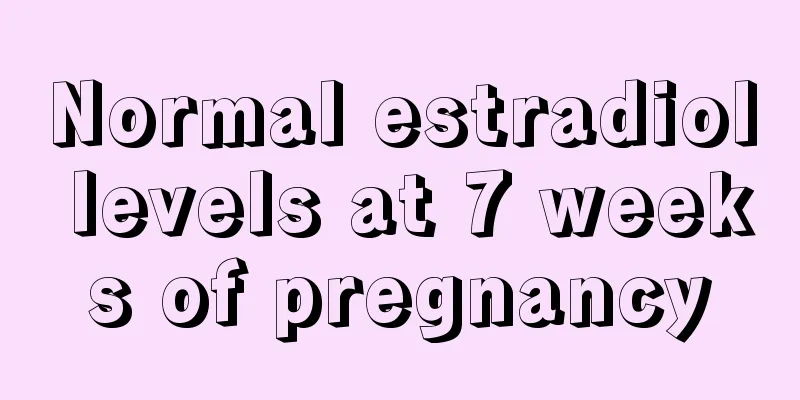What is the cause of placenta accreta

|
Paipanlian Lian means that part of the placenta will adhere to the inner wall of the woman's uterus. This phenomenon is quite serious because the baby relies on the placenta to absorb energy and nutrients from the mother's body. If there is a problem with the placenta, your current health will be affected, and the development of the fetus will also be affected. Therefore, surgery must be taken quickly when pinching the age. So what causes placental adhesion? Placenta accreta: When the placenta is completely or partially adhered to the uterine wall and cannot be separated by itself, it is called placenta accreta. There is no bleeding when there is complete adhesion, but bleeding is likely to occur when there is partial adhesion due to the opening of the blood sinuses on the placental detachment surface and the influence of placental retention on uterine contraction. Endometrial inflammation or endometrial damage caused by multiple induced abortions is a common cause of placenta adhesion. If you have had multiple abortions, placenta adhesion is more likely to occur. When you see the doctor, you should tell the doctor your reproductive history and the doctor will make a reference based on your situation. It is recommended to have regular prenatal checkups, deal with problems in a timely manner, and go to a regular hospital for delivery. Endometrial inflammation or endometrial damage due to recurrent miscarriage is a common cause of placenta accreta. Unnecessary intrauterine operations should be minimized and inflammation should be actively treated to help prevent the recurrence of adhesions. If you have had multiple abortions, placenta adhesion is more likely to occur. When you see the doctor, you should tell the doctor your reproductive history and the doctor will make a reference based on your situation. It is recommended to have regular prenatal checkups, deal with problems in a timely manner, and go to a regular hospital for delivery. Placenta adhesion refers to the situation where the placental villi only penetrate the surface layer of the uterine wall. It is mostly caused by multiple curettages or uterine cavity infections that lead to poor growth of the local endometrium. Partial placenta adhesion is caused by partial detachment of the placenta and partial non-detachment, which leads to poor uterine contraction and opening of the blood sinuses on the detached surface, resulting in bleeding. Placenta adhesion, in the uterine cavity, can affect uterine contraction and infection. Abnormal uterine contraction can lead to increased vaginal bleeding, which may lead to heavy bleeding and is a cause of anemia and infection. If the consequences are serious, it may lead to fever, infection, or even sepsis, which is life-threatening. If placenta adhesion occurs, it must be treated correctly and promptly to avoid reproductive system infection. When the placenta is attached to the lower part of the uterus or the internal os of the cervix, it is called placenta previa. If it is a central placenta previa, a cesarean section must be chosen during delivery; if it is a marginal placenta previa, it may change with the disappearance of the cervical canal. Both of these situations cannot be adjusted artificially. You can observe the changes in the position of the placenta regularly, be careful not to engage in strenuous activities, and refrain from sexual intercourse. If you find vaginal bleeding, you should go to the hospital immediately. |
<<: Does episiotomy during normal delivery have any effect on pooping?
>>: Why is the episiotomy wound painful?
Recommend
Progesterone changes after ovulation
Generally speaking, the progesterone level in wom...
Picture of eggs released during ovulation
All women know that in addition to a few special ...
Diagnostic criteria for abdominal obesity
In daily life, we can see many people with fat bo...
Why does a mint candy have a circle in the middle? What is the function of the circle in the middle of a mint candy?
We all know that mint candies taste cool and have...
How to clean shellfish? How many minutes do you usually steam seafood shellfish?
In the hot summer, it is time to eat at food stal...
How long does it take to expel the fetal sac after medical abortion?
How long does it take for the gestational sac to ...
Causes of bleeding 20 days after abortion
There was no bleeding on the day of the miscarria...
I am three months pregnant and always worried about the fetus stopping
The third month of pregnancy is the early stage o...
What should I do if my menstrual flow is light after induced abortion?
After induced abortion, women find that their men...
Atorvastatin and rosuvastatin have similar lipid-lowering effects. What are the differences in their use?
Statins are commonly used drugs for the treatment...
What should a girl do if she feels itchy down there?
Generally speaking, when we mention gynecological...
What is chest dr
Chest DR is a medical examination method, also kn...
What should I do if my period does not come during breastfeeding?
For mothers who do not breastfeed, ovulation will...
Sleeping without drying your hair: hidden health risks
Sleeping without drying your hair: hidden health ...
Yellow leucorrhea with blood and lower abdominal pain
If the leucorrhea is yellow and contains blood, a...









